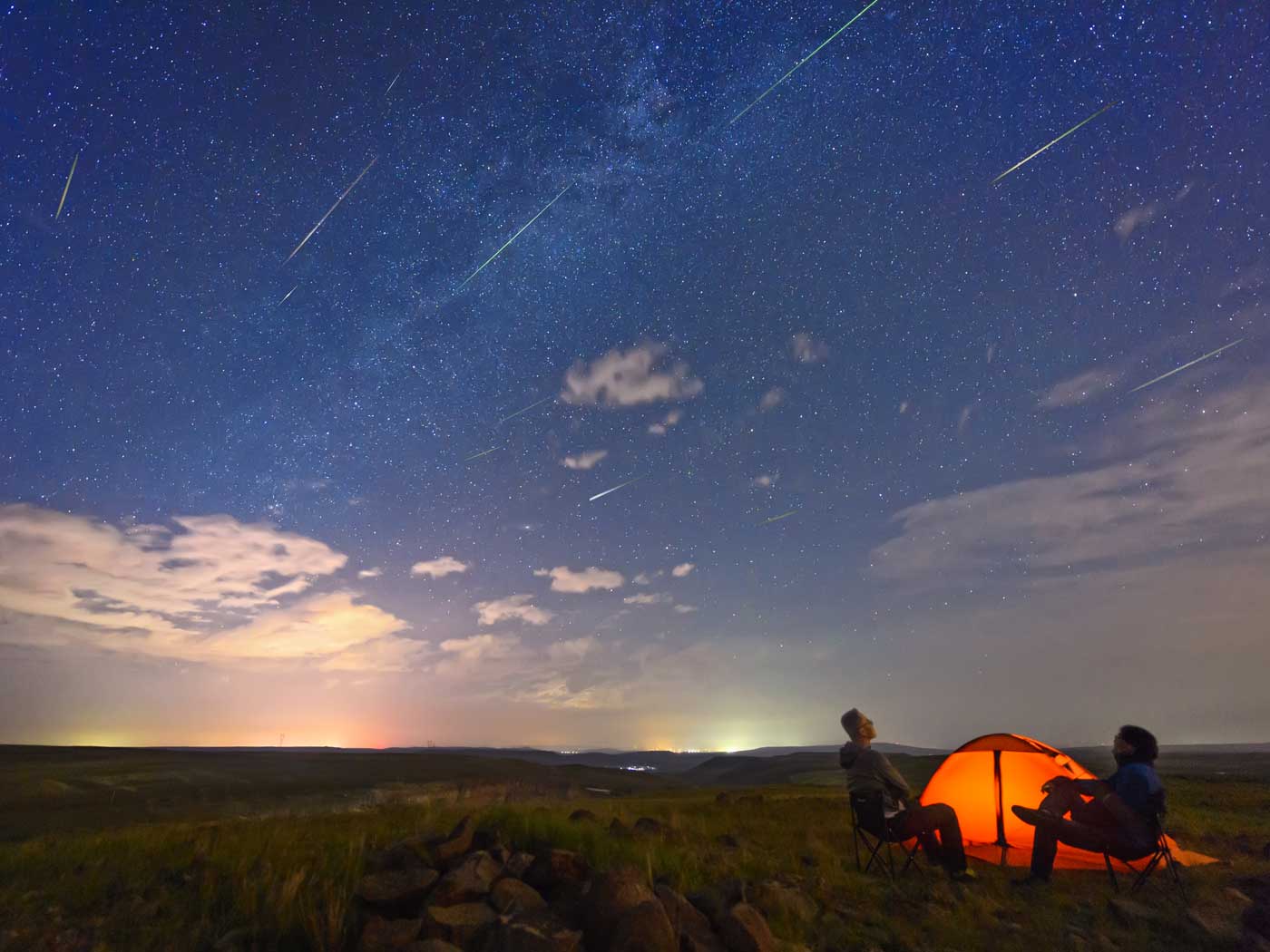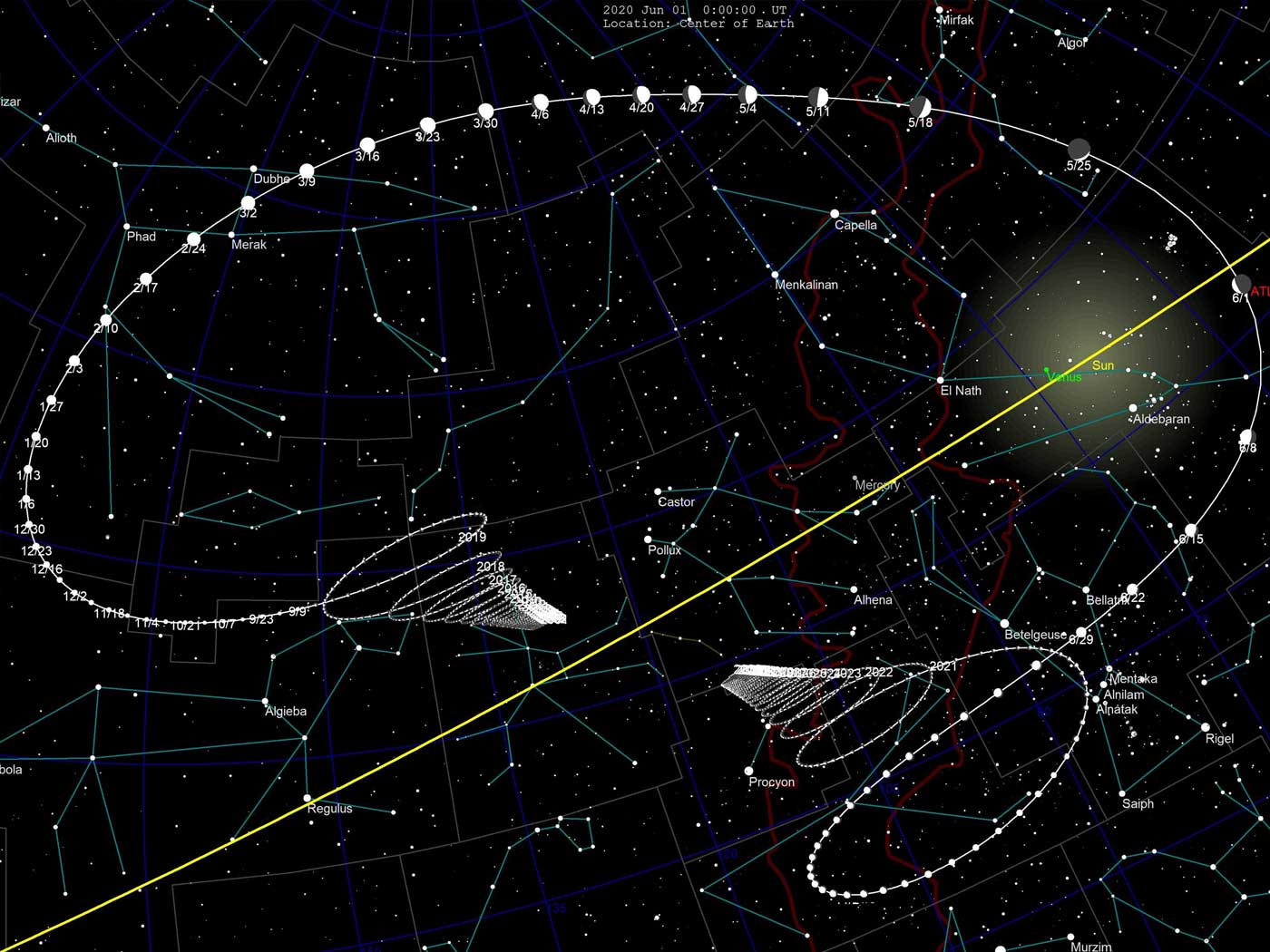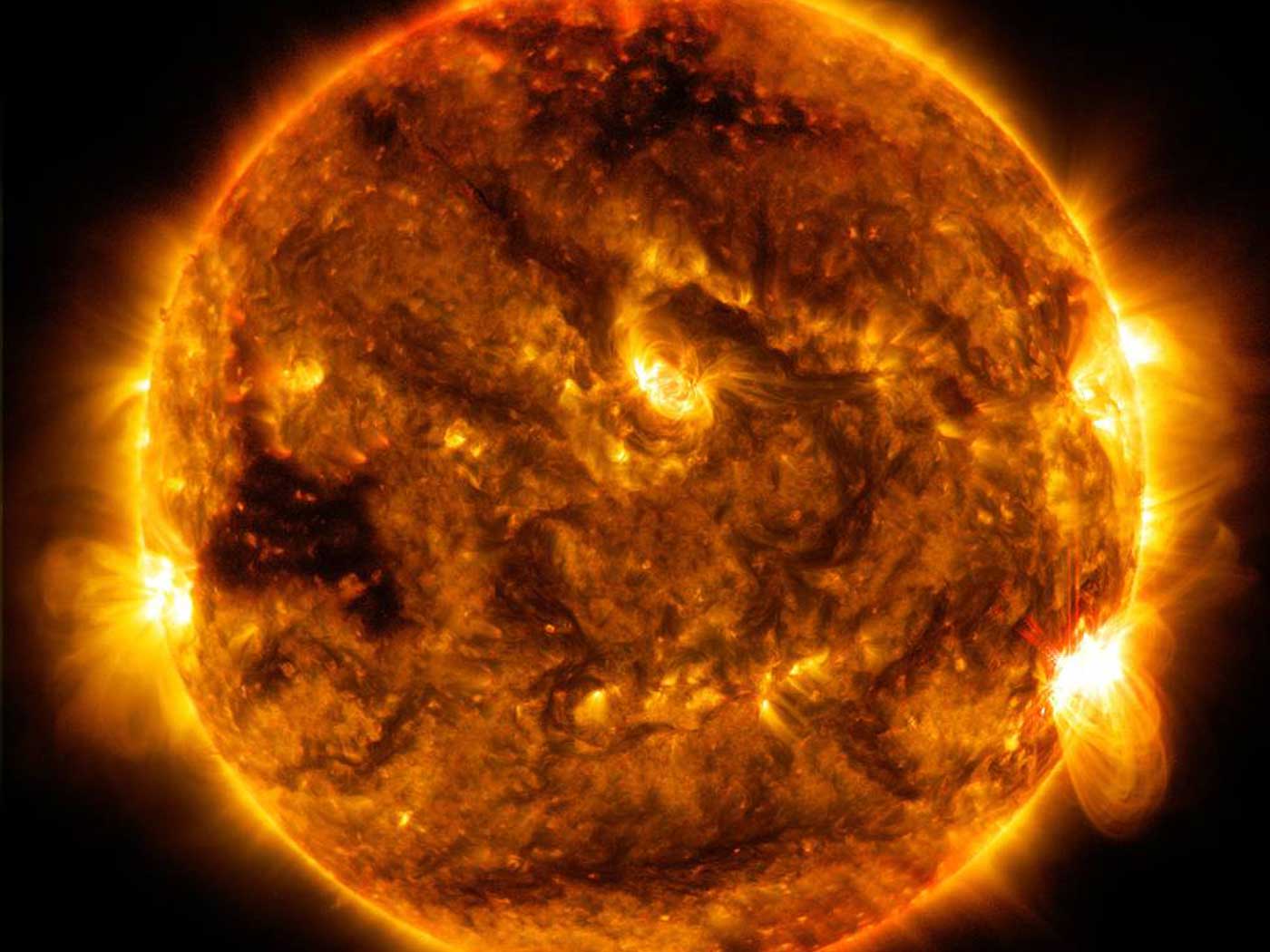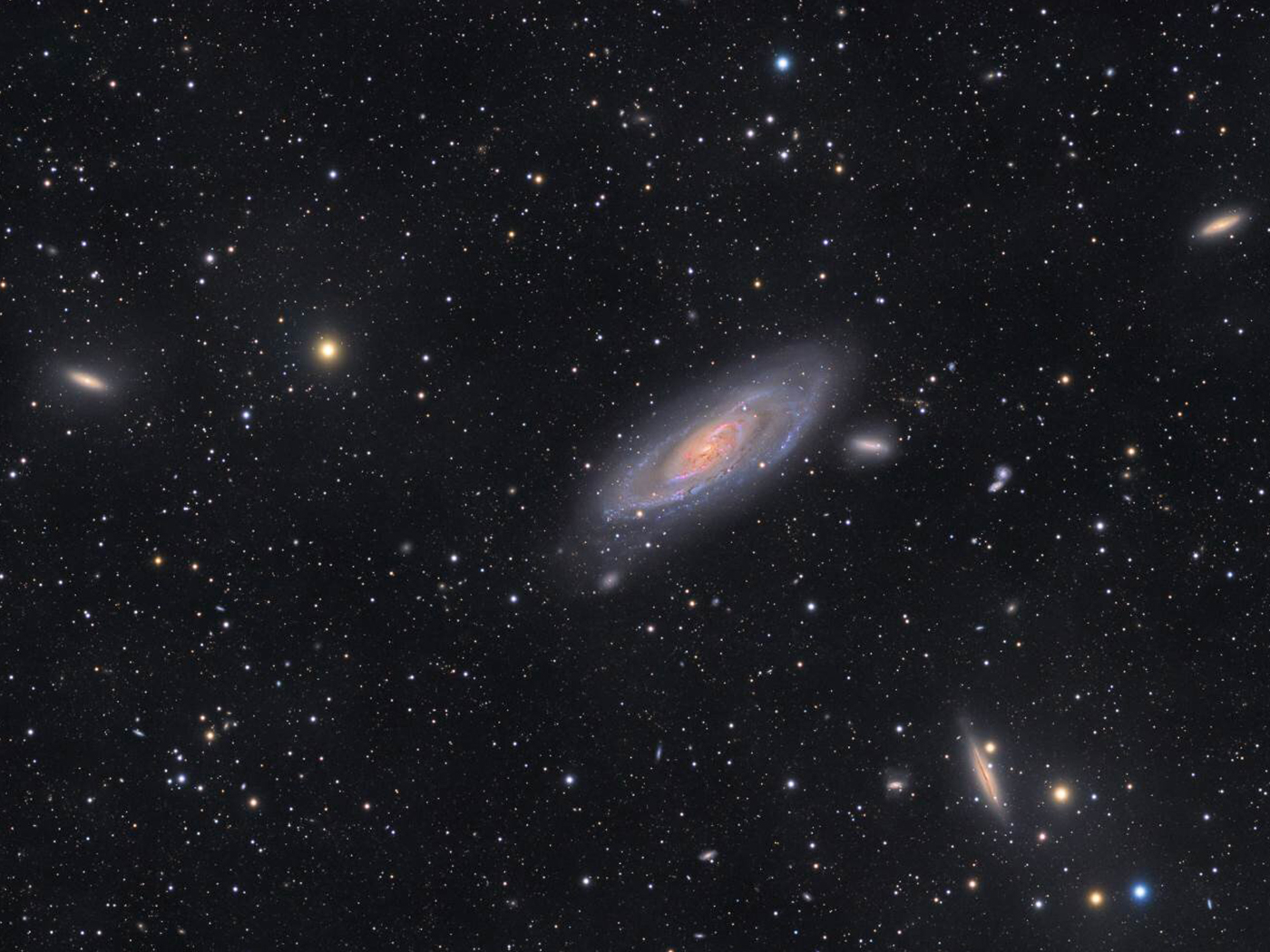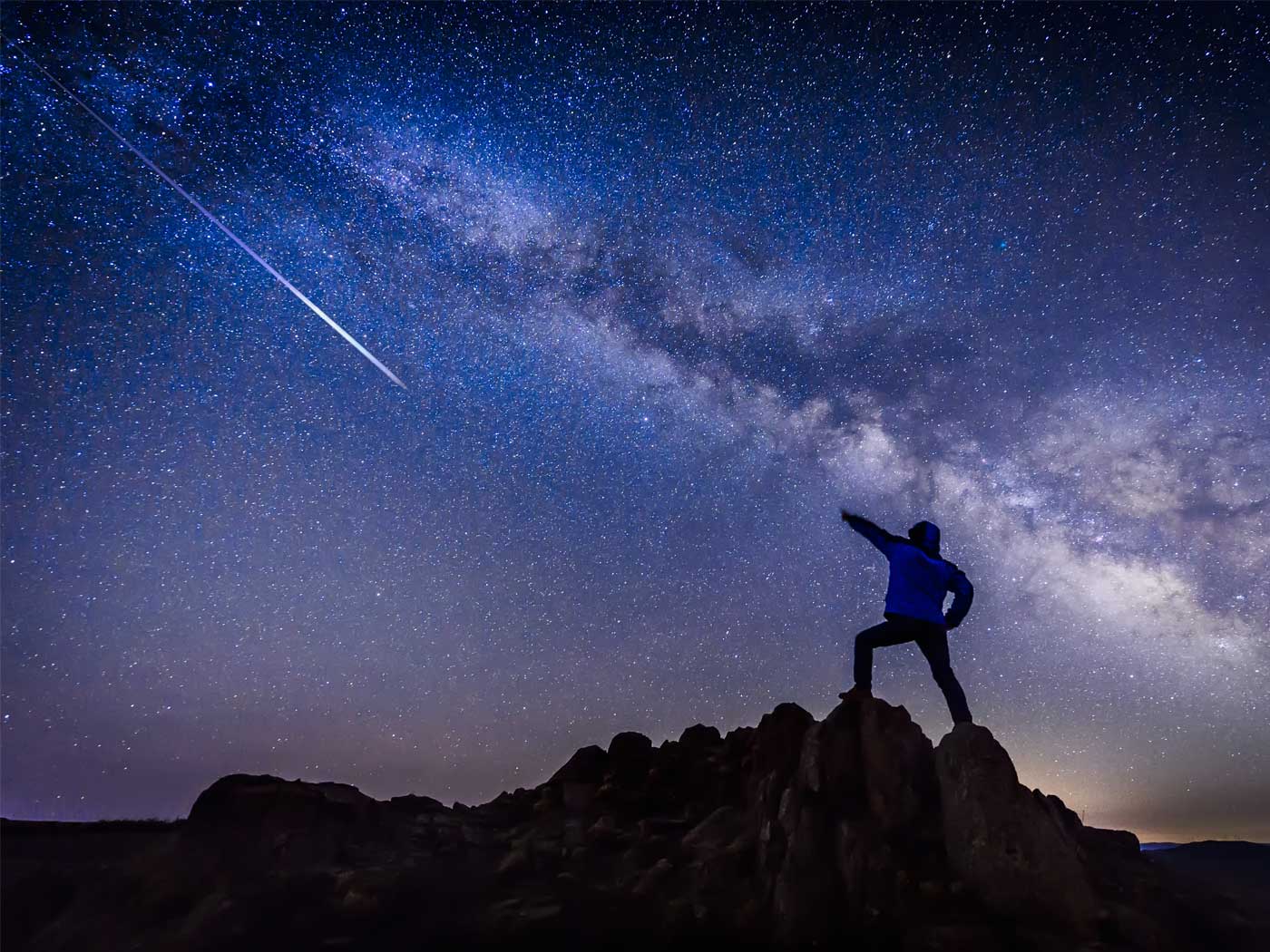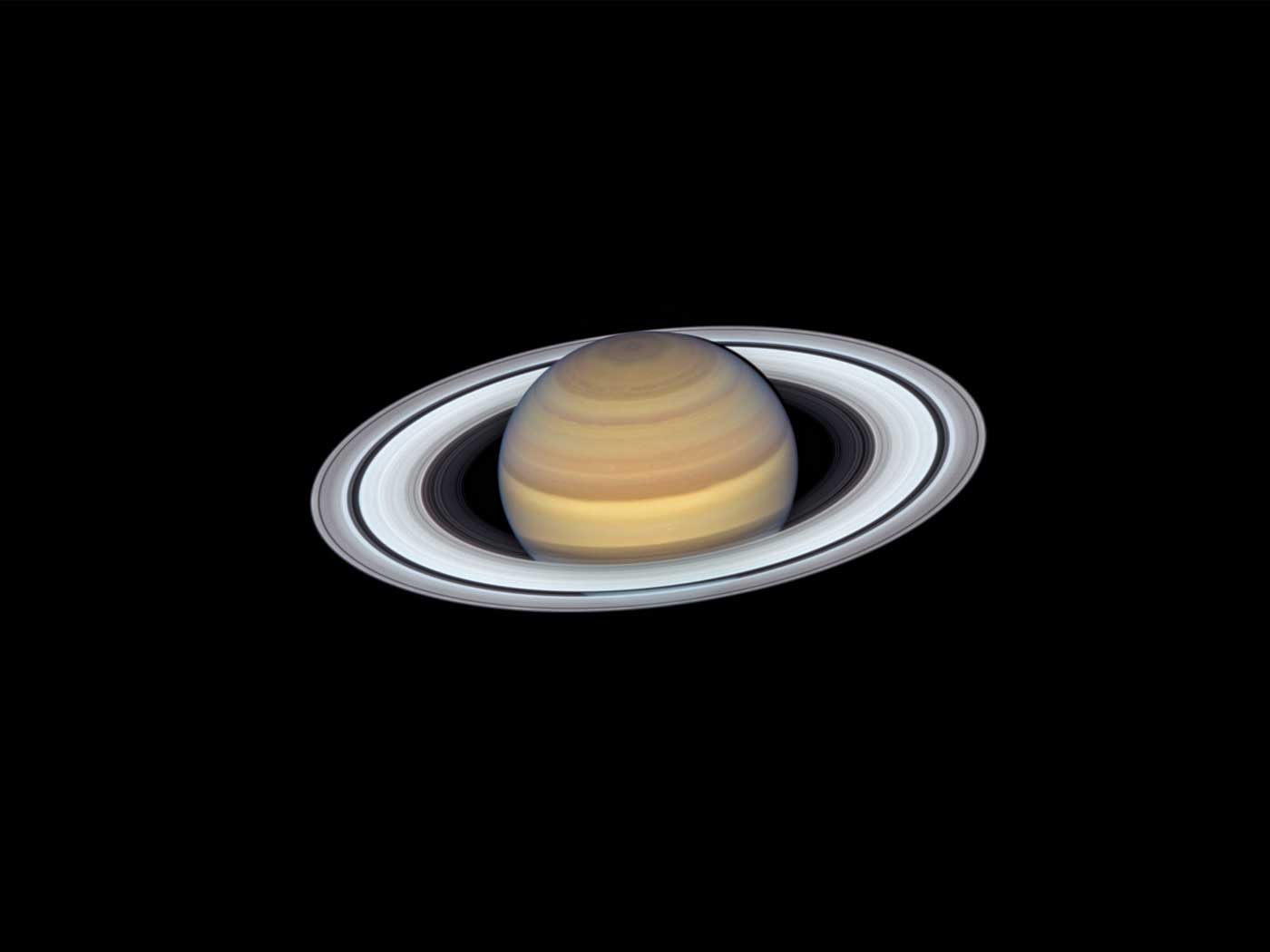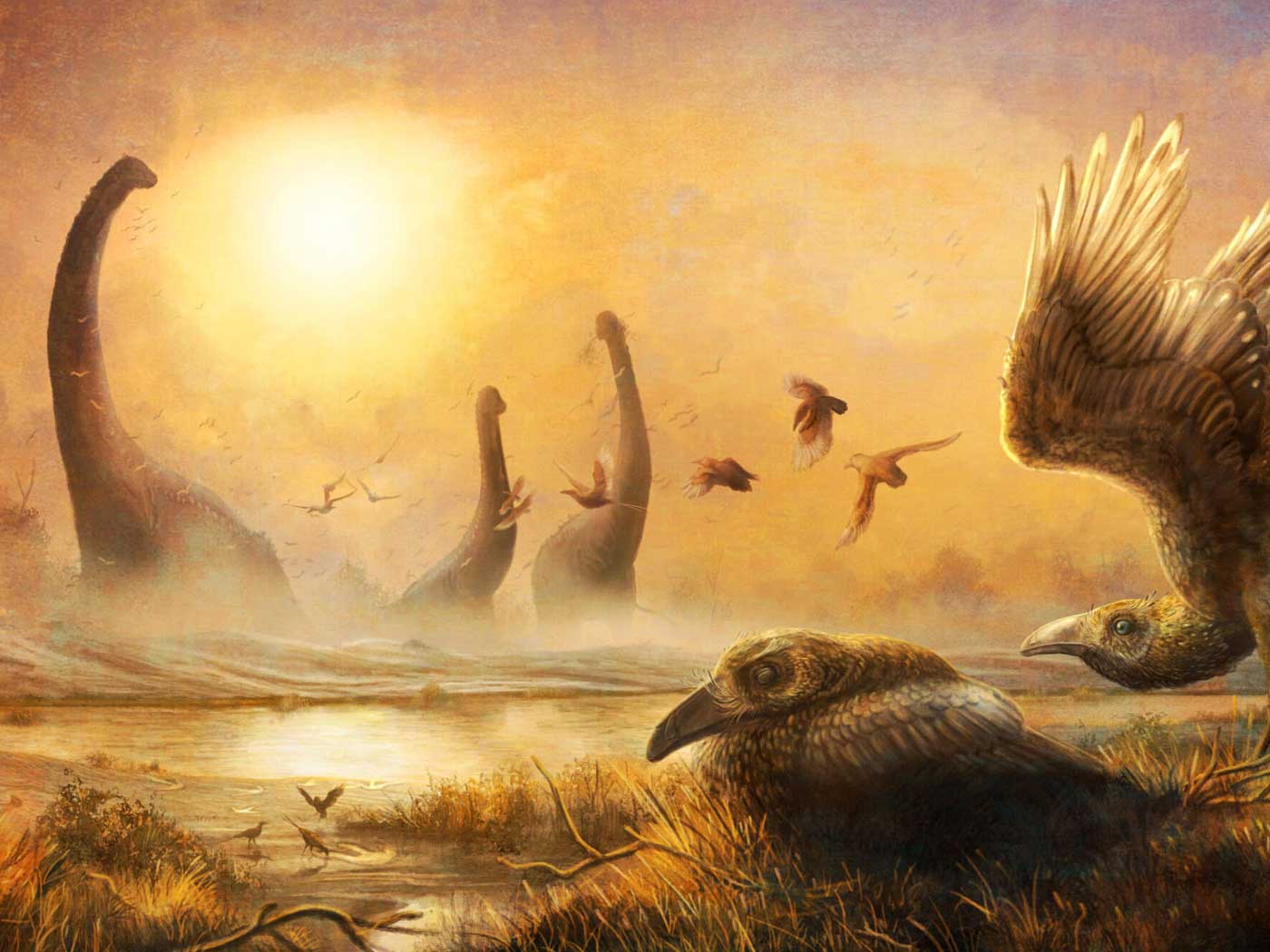For families seeking worthwhile home-based science activities, Comet SWAN presents another opportunity to do some backyard astronomy and to celebrate God’s celestial handiwork.1,2 For those living under very dark Southern Hemisphere skies, far from city lights, the comet is already visible to the naked eye, though just barely.
A pair of binoculars should provide a better view.1 A previous news article offered suggestions on how to stabilize your binoculars while using them to view celestial objects.3 Comet SWAN is very low in the early morning eastern sky for people living at or below 35° N latitude, although it is higher in the sky for observers in the Southern Hemisphere (the lower your latitude, the better your view).4
You can find Comet SWAN’s location in your night sky using the online planetarium at the website The Sky Live.1,5 Instructions for using this online planetarium are found here.6
If the comet doesn’t break apart, then it should become apparent to the naked eye, at least under dark skies. Comet SWAN should make its closest approach to Earth on May 13, and its closest approach to the sun on May 27.1
A previous news article discussed the high hopes astronomers had that Comet ATLAS would put on a good show.7 Although those hopes were dashed when Comet ATLAS broke apart late last month,8 Comet SWAN still has the potential to make a good show for skywatchers.
That comets often break apart as they approach the sun is a reminder of their ephemeral nature. Comets are essentially dirty snowballs in space. As they approach the sun, ices in the comet nucleus vaporize, forming a fuzzy coma surrounding the nucleus and, in many cases, the long, beautiful tails for which comets are famous. Most comets only have enough material to remain visible for thousands of years, yet secular astronomers claim that comets are “leftovers” from the solar system’s formation 4.6 billion years ago. Of course this raises the obvious question: Why then are any comets still visible?
Secular astronomers claim that reservoirs of potential comet nuclei can “replenish” the solar system with new comets. However, different comets have different orbital characteristics, so secular astronomers need at least two, maybe three, different reservoirs for this idea to even have a chance of working. Yet there is no direct evidence for the first such reservoir, the well-known Oort Cloud.9 The second reservoir, called the Kuiper belt, does exist, but most of the observed bodies in the Kuiper belt are much larger than typical comet nuclei.10,11 The third reservoir is called the Scattered Disk, but even secular astronomers recognize that it has far too little material for it to serve as a source for new comets.12 And there are even more problems with these proposed comet sources, too many to discuss in detail here.13,14
Creationists think the answer is much more obvious: Comets aren’t billions of years old.
So good day to our low-latitude ICR supporters. May the Lord bless you with clear, dark skies so that you can get a good view of Comet SWAN. And remember that the best explanation for the continued existence of comets is that they are young!
Stage image: The Ion Tail of New Comet SWAN.
Stage image credit: Gerald Rhemann/NASA. Copyright © 2020. Adapted for use in accordance with federal copyright (fair use doctrine) law. Usage by ICR does not imply endorsement of copyright holders.
References
1. Mack, E. Comet SWAN is now visible and could be the best in years. CNET. Posted on cnet.com May 4, 2020, accessed May 6, 2020.
2. Psalm 19:1-2.
3. Hebert, J. Enjoying God’s Universe While Isolated, on a Budget. Creation Science Update. Posted on ICR.org April 4, 2020, accessed May 6, 2020.
4. Georgiou, A. Comet SWAN is About to Pass Earth and May Be So Bright It’s Visible With Naked Eye. Newsweek. Posted on newsweek.com May 5, 2020, accessed May 6, 2020.
5. The Sky Live.
6. Use your web browser to go to theskylive.com. Then click on the “Planetarium” button at the top of the page. Set your location using either the name of your city, your latitude and longitude, or the online map. The controls for doing this are fairly straightforward and easy to use. After setting your location you will need to scroll down to the bottom of the page and press the “Confirm Location” button. Then enter the name of the celestial object that you want to observe, in this case “Comet SWAN (C/2020 F8)”. Then press the “Planetarium” button again to take you back to the online planetarium. If Comet SWAN is currently visible in your sky, then its location will be indicated by an icon that resembles a small comet. The online planetarium provides an artificial horizon so that you can see whether the comet is above your local horizon, and in what direction. Note that clicking on the small time-and-date button in the upper left-hand corner of the planetarium screen will pull up controls that enable you to advance or regress the night sky to the desired date and Greenwich (UTC) time.
7. Hebert, J. Comet ATLAS: Nighttime Diversion for Isolated Families. Creation Science Update. Posted on ICR.org March 26, 2020, accessed May 6, 2020.
8. Andreoli, C., et al. Hubble Watches Comet ATLAS Disintegrate Into More Than Two Dozen Pieces. NASA. Posted on nasa.gov April 28, 2020, accessed May 6, 2020.
9. Druyan, A. and C. Sagan. 1985. Comet. New York: Random House, 398.
10. Creationists prefer to call these bodies “trans-Neptunian objects” rather than “Kuiper belt objects”, because the use of the latter subtly but incorrectly suggests that these objects have the small expected sizes of potential comet nuclei.
11. Observed Kuiper belt objects are generally much larger than comet nuclei. Secular astronomers generally have not found the large number of smaller Kuiper belt objects they were expecting. In fact, as of December 2009, only one comet-sized Kuiper belt object has been observed. See McKee, M. What happened to the Kuiper Belt’s smallest objects? New Scientist. Posted on newscientist.com October 4, 2008, accessed May 6, 2020.
12. Wang, J.-H. and R. Brasser. 2014. An Oort Cloud Origin of the Halley-type comets. Astronomy and Astrophysics. 563, A122.
13. Stern, S. A. and P. R. Weissmann. 2001. Rapid collisional evolution of comets during the formation of the Oort Cloud. Nature. 409 (6820): 589-591.
14. Spencer, W. 2014. Critique of Modern Oort Comet Theory. Creation Research Society Quarterly. 50 (3): 146-153.
*Dr. Jake Hebert is Research Associate at the Institute for Creation Research and earned his Ph.D. in physics from the University of Texas at Dallas.
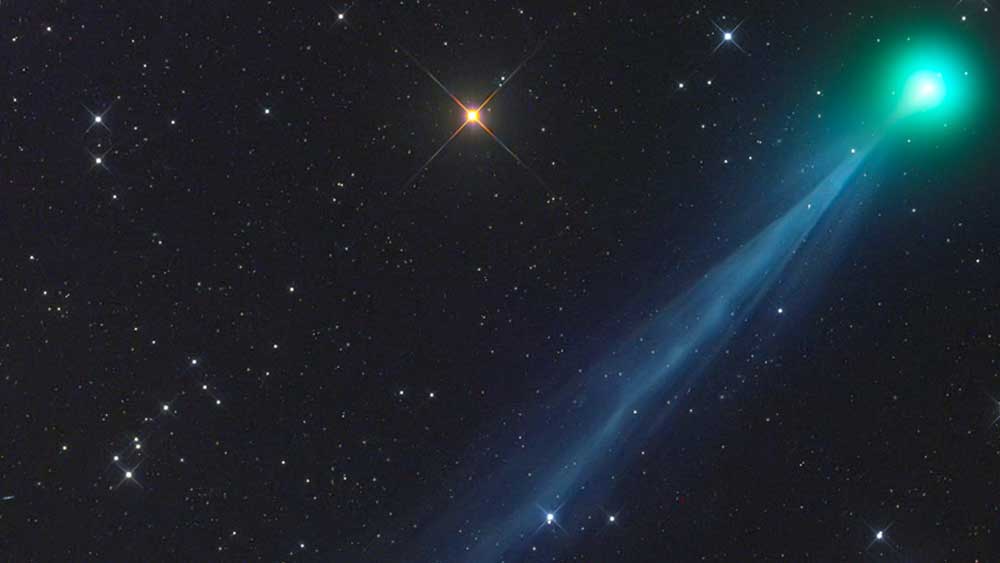
Will Comet SWAN Put on a Celestial Show?
The Latest
The Golden Numbers
Evolutionists theorize that the universe came into being through random means. Fundamentally, randomness lacks symmetry since the very concept of symmetry...
Scientists Question Foundational Big Bang Assumption
In April 2024, some of the world’s leading cosmologists convened at the Royal Society in London to question the cosmological principle—the...
Moroccan Dinosaurs in Marine Rocks, Too
Two recent papers by paleontologist Nicholas Longrich and his colleagues describe some unexpected findings in phosphate mines of northern Morocco.1,2...
CREATION PODCAST
Ernst Haeckel: Evolutionary Huckster | The Creation Podcast:...
Ernst Haeckel, a German Zoologist, is famous for developing a series of images of embryos in development called Anthropogenie. These images,...
Bees Master Complex Tasks Through Social Interaction
Bees are simply incredible.1,2 These little furry fliers challenge the very foundation of Darwinism in many diverse ways.
Bees have been...
The Tail of Man’s Supposed Ancestors
Although it has been known for decades and despite insistence to the contrary from the evolutionary community, man—Homo sapiens—has never...
When Day Meets Night—A Total Success!
The skies cleared above North Texas on Monday, April 8, for a spectacular view of the 2024 Great American Solar Eclipse. Hundreds of guests joined...
The Sun and Moon—Designed for Eclipses
Before discovering thousands of planets in other solar systems, scientists tended to assume that other solar systems would be very similar to our own....
Let ICR Help You Prepare for the Great American Solar Eclipse!
On Monday, April 8th, the moon will move directly between the earth and the sun, resulting in a total solar eclipse visible in northern Mexico, much...
Total Eclipse on April 8th
“You alone are the LORD; You have made heaven, the heaven of heavens, with all their host, the earth and everything on it, the seas and all that...




